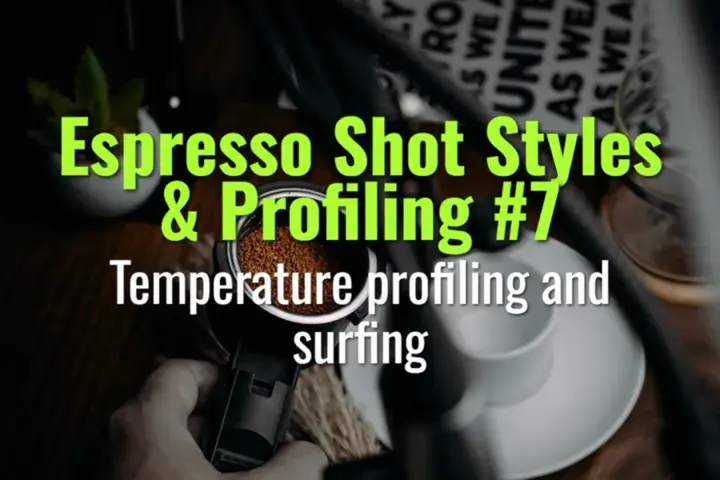Temperature profiling and surfing
How temperature profiling and temperature surfing influence espresso extraction, especially across roast levels and machine types.
- Coffee Basics Nerds
- 2 min read
Article 7 of 12 in Espresso Shot Styles & Profiling/

Temperature Profiling
- Definition: Actively changing brew water temperature during extraction.
- Requires machines with programmable PID or multi-step heating control.
- Typical Approaches:
- Declining Profile: Start hotter (e.g., 95–96°C) → taper to 90–92°C. Enhances brightness initially, rounds bitterness later.
- Rising Profile: Start cooler (90–91°C) → rise to 94–95°C. Smooths acidity, increases body.
- Flat Profile: Constant temperature throughout, common in traditional machines.
- Flavor Impact:
- Hotter temps extract acids and aromatics quickly.
- Lower temps reduce bitterness and heavy roast flavors.
- Profiles can balance clarity vs. body depending on roast.
Temperature Surfing
- Definition: Manual technique on single-boiler or HX machines without stable PID control.
- Involves timing the shot relative to the boiler’s heating cycle.
- Workflow:
- Flush group head to purge overheated water.
- Wait for temperature to stabilize.
- Pull shot within target thermal window.
- Goal: Approximate stable brew temperature without advanced hardware.
Practical Applications
- Light Roasts: Benefit from hotter start (94–96°C) to extract sweetness and aromatics.
- Dark Roasts: Prefer cooler (88–91°C) to avoid bitterness and astringency.
- Surfing Example: On an HX machine, flush until water stops flashing/boiling → wait ~10–20 sec → brew.
Challenges
- Temperature profiling requires advanced machines.
- Surfing demands skill, practice, and observation of machine behavior.
- Inconsistent execution = variable results.
Summary
Temperature profiling offers precise flavor control by adjusting heat mid-extraction, while temperature surfing is a barista skill to stabilize less advanced machines. Both techniques bridge the gap between equipment limitations and desired flavor outcomes, especially across different roast levels.